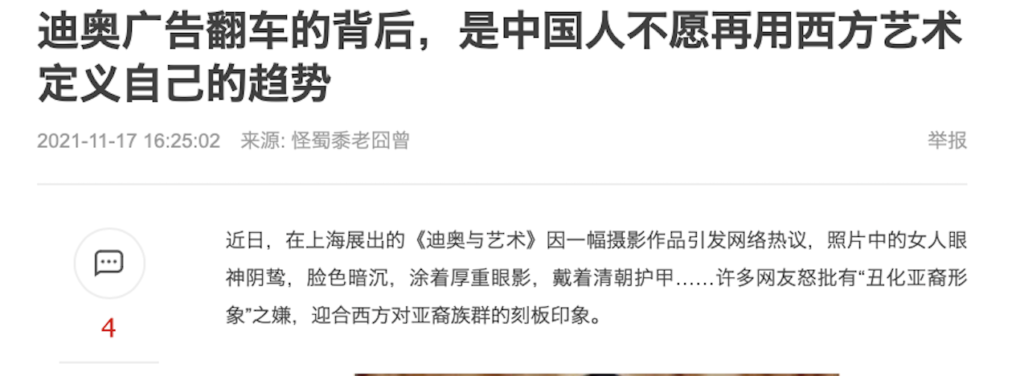In today’s digital landscape, managing a brand’s reputation is more critical than ever in China, especially on platforms like Xiaohongshu (Little Red Book). This vibrant social commerce platform, known for its user-generated content and community-driven discussions, offers overseas brands a unique opportunity to connect with Chinese consumers. However, it also presents distinct challenges that can quickly escalate into crises if not addressed effectively. From negative reviews and misinformation to influencer controversies and product quality issues, understanding these potential pitfalls is essential for any brand aiming to succeed in this dynamic market. In this article, Deep Digital China will explore common crisis scenarios on Xiaohongshu and outline proactive strategies to prevent them, ensuring that brands not only survive but thrive in this competitive environment.

1. Common Crisis Scenarios on Xiaohongshu-Negative User Reviews
Scenario: Users post negative reviews about a product or service, which can quickly gain traction and influence potential customers.
Prevention Strategies:
- Monitor Feedback: Regularly track mentions and keywords related to your brand. Tools for sentiment analysis can help you catch negative reviews early.
- Engage Proactively: Respond to user feedback promptly. Acknowledge concerns and offer solutions, such as refunds or replacements, to show you value customer input.
- Encourage Positive Reviews: Actively encourage satisfied customers to share their positive experiences. This can help dilute the impact of negative reviews.
2. Misinformation or Miscommunication
Scenario: Incorrect information about your brand or products circulates, leading to confusion or distrust among consumers.
Prevention Strategies:
- Clear Communication: Ensure all marketing materials and product descriptions are accurate and clear. Provide detailed information to minimize misunderstandings.
- Fact-Checking: Before responding to any claims or comments, verify the facts. Address misinformation directly and provide accurate information to counter false claims.
- Educate Your Audience: Use content to educate consumers about your products or services, clarifying any misconceptions that might arise.

3. Influencer Controversies
Scenario: An influencer promoting your brand faces backlash for their behavior or comments, which can reflect poorly on your brand.
Prevention Strategies:
- Careful Selection: Choose influencers who align with your brand values and have a positive public image. Conduct thorough research before partnerships.
- Crisis Plan for Influencer Issues: Have a plan in place for how to address any controversies involving influencers. This may include distancing your brand from the influencer or issuing a statement if necessary.
- Monitor Influencer Activity: Keep an eye on your influencers’ social media activity to catch any potential issues early.
4. Product Quality Issues
Scenario: A product is found to have quality issues, leading to customer complaints and potential safety concerns.
Prevention Strategies:
- Quality Control: Implement stringent quality control measures to ensure your products meet safety and performance standards before they reach consumers.
- Transparent Communication: If an issue arises, communicate openly with your customers. Inform them of the problem and the steps you are taking to resolve it.
- Recall Procedures: Establish clear procedures for product recalls if necessary. Being proactive can mitigate damage to your reputation.

5. Cultural Missteps
Scenario: Content or marketing campaigns that do not resonate culturally may offend users or lead to backlash.
A notable example of a cultural misstep involves the fashion brand Dior. The exhibition “Dior and Art” in Shanghai sparked heated discussions online due to a particular photograph. In the image, a woman has a sinister gaze, a dull complexion, heavy eye makeup, and wears Qing Dynasty armor. Many Chine- se internet users angrily criticized the portrayal, claiming it “uglyfies the image of Asians” and caters to Western stereotypes about Asian communities. This reflects that Chinese society is no longer willing to define itself according to Western interpretations of art, and it also indicates that Dior has failed to understand the latest needs and trends of Chinese consumers.

Prevention Strategies:
- Cultural Sensitivity Training: Educate your team about cultural nuances and preferences specific to the Chinese market. This can help avoid unintentional offenses.
- Local Expertise: Collaborate with local marketers or consultants who understand the cultural landscape and can guide your content strategy.
- Market Research: Conducting thorough research before launching campaigns can help brands avoid similar pitfalls, ensuring that their messaging is respectful and relevant to the local culture.
- Test Content Before Launch: Conduct focus groups or surveys to gauge reactions to new campaigns, ensuring they align with local values and sensibilities.
6. Data Privacy Concerns
Scenario: Users express concerns about how their data is being used, especially in light of increasing awareness around privacy issues.
Prevention Strategies:
- Transparent Data Policies: Clearly communicate your data collection and usage policies. Ensure users know how their information will be used and protected.
- Compliance with Regulations: Stay informed about data protection laws in China and ensure your practices comply with these regulations.
- User Control: Provide users with options for managing their data, such as opting in or out of certain data collection practices.
7. Crisis of Trust
Scenario: A series of negative experiences leads to a general decline in trust among consumers, which can be difficult to rebuild.
Prevention Strategies:
- Consistent Quality and Service: Focus on delivering consistently high-quality products and services to maintain customer trust.
- Transparency: Be open about your business practices, share your successes and failures, and communicate your commitment to improvement.
- Engage with the Community: Foster a positive community around your brand by engaging with users, sharing valuable content, and creating a sense of belonging.
Conclusion
By proactively addressing these common crisis scenarios on Xiaohongshu, brands can protect their reputation and foster trust among consumers. Understanding the unique dynamics of the platform and the preferences of its user base is essential. Implementing effective prevention strategies not only helps avoid crises but also strengthens brand loyalty and enhances overall customer satisfaction. If you are looking for ways to manage your reputation on Xiaohongshu, please feel free to contact Deep Digital China.

